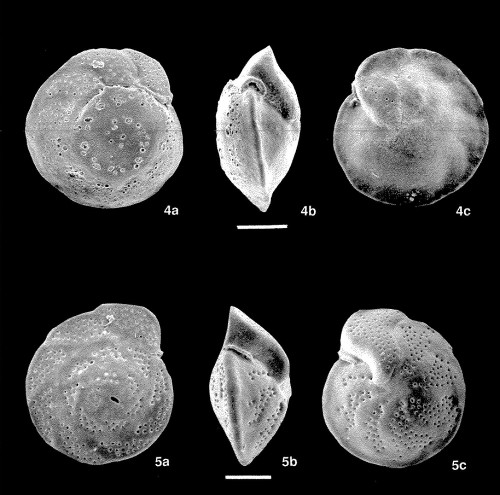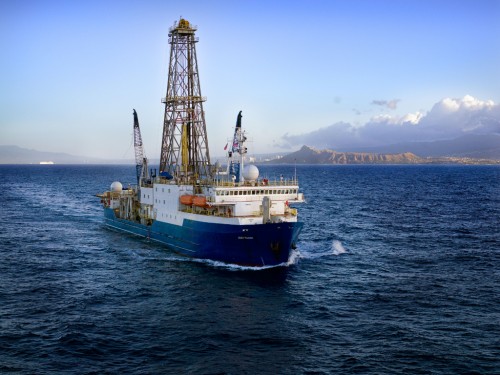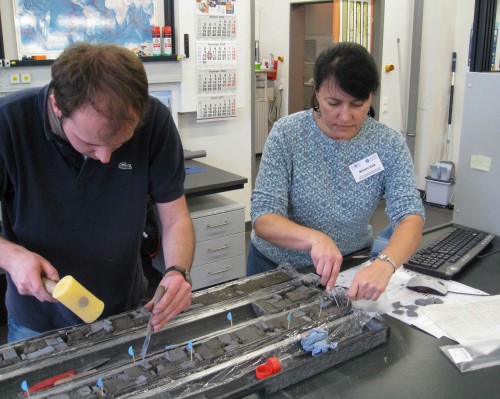Thirty-eight million years ago, tropical jungles thrived in what are now the cornfields of the American Midwest and furry marsupials wandered temperate forests in what is now the frozen Antarctic.
The temperature differences of that era, known as the late Eocene, between the equator and Antarctica were half what they are today.
A debate has been ongoing in the scientific community about what changes in our global climate system led to such a major shift from the more tropical, greenhouse climate of the Eocene to modern and much cooler climates.
New research results published in this week’s issue of the journal Science, led by Rensselaer Polytechnic Institute scientist Miriam Katz, are providing some of the strongest evidence to date that the Antarctic Circumpolar Current (ACC) played a key role in the shift.
“What we have found is that the evolution of the Antarctic Circumpolar Current influenced global ocean circulation much earlier than previous studies have shown,” said Katz. “This finding is particularly significant because it places the impact of initial shallow ACC circulation in the same interval when the climate began its long-term shift to cooler temperatures.”
There has been a debate over the past 40 years on what role the Antarctic Circumpolar Current had in the past cooling trend.
“These climate changes are one of the most significant shifts in Earth’s history, from early Cenozoic ‘greenhouse’ climates to the mid- to late Cenozoic ‘icehouse’ that saw repeated massive glaciations of the polar regions,” said Candace Major, program director in the National Science Foundation’s (NSF) Division of Ocean Sciences.
The research was funded by NSF in partnership with the Integrated Ocean Drilling Program, and its predecessor programs, the Ocean Drilling Program and Deep Sea Drilling Project.
“The work by Katz and colleagues is the first to demonstrate that the basic structure of currents associated with modern ocean circulation has existed for the past 33 million years,” said Major.
Previous research had placed the development of the deep ACC–greater than 2,000 meters water depth–in the late Oligocene, approximately 23-25 million years ago.
That’s well after the global cooling pattern had been established.
Katz and colleagues have placed the global impact of the ACC at approximately 30 million years ago, when it was still just a shallow current.
Oceans and global temperatures are closely linked. Warmer ocean waters result in warmer air temperatures and vice versa.
In the more tropical environs of the Eocene, ocean circulation was weaker and currents more diffuse.
As a result, heat was more evenly distributed around the world. That resulted in fairly mild ocean temperatures worldwide.
Today, ocean temperatures vary considerably and redistribute warm and cold water around the globe.
“As the global ocean currents were formed and strengthened, the redistribution of heat likely played a significant role in the overall cooling of the Earth,” Katz said.
No current is more major than the ACC, scientists believe.
Often referred to as the “mixmaster” of the ocean, the ACC thermally isolates Antarctica by preventing the warm surface waters of subtropical gyres from passing through.
The ACC instead redirects some of that warm water back toward the north Atlantic, creating Antarctic Intermediate Water.

This blocking of heat enabled the formation and preservation of the Antarctic ice sheets, according to Katz.
The circumpolar circulation, Katz concludes, was responsible for the development of the modern four-layer ocean current and heat distribution system.
Katz looked at the uptake of several elements’ isotopes, or variants, in the fossil skeletons of small planktonic organisms found in ocean sediments.
Using the drillship, the fossil organisms, known as benthic foraminifera, were brought up from beneath the sea-floor in long cores of sediments.
The foraminifera incorporated certain elements and isotopes, reflecting environmental conditions at the time.
By analyzing the ratios of these elements and isotopes, researchers were able to reconstruct past environmental conditions. They looked at isotopes of oxygen and carbon, along with ratios of magnesium versus calcium.
Analysis of these isotopes showed the earliest evidence for Antarctic Intermediate Waters, which circulates as a consequence of the ACC.
This finding is the first evidence of the effects of shallow ACC formation.
The results place the ACC’s global impact much closer to the time when Antarctica separated from South America, creating a gateway.
It had previously been thought that currents moving through this gateway could not be strong enough at such shallow depths to affect global ocean circulation.
“By reconstructing the climates of the past, we can explore Earth system responses to current climate change,” Katz said.
Katz is joined in the research by Benjamin Cramer of Theiss Research; J.R. Toggweiler of Geophysical Fluid Dynamics Lab/NOAA; Chengjie Liu of Exxon Mobil Exploration Co.; Bridget Wade of University of Leeds; and Gar Esmay, Kenneth Miller, Yair Rosenthal, and James Wright of Rutgers University.


With thanks so much just for this great dcoument; this is the form of thing that will keeps my family going throught manufactured.I`ve been looking around for your site after I heard about them from a companion and has been thrilled whenI was able to find if right after searching for a little while. Being a devoted blogger, I`m thrilled to see otherstaking initiative and triggering the community. I simply wanted to thoughts to show my own appreciationfor your work when it`s very pushing, and many authors do not get the credit the deserve. I am sureI`ll return to their office and will give some of my girlfriends.